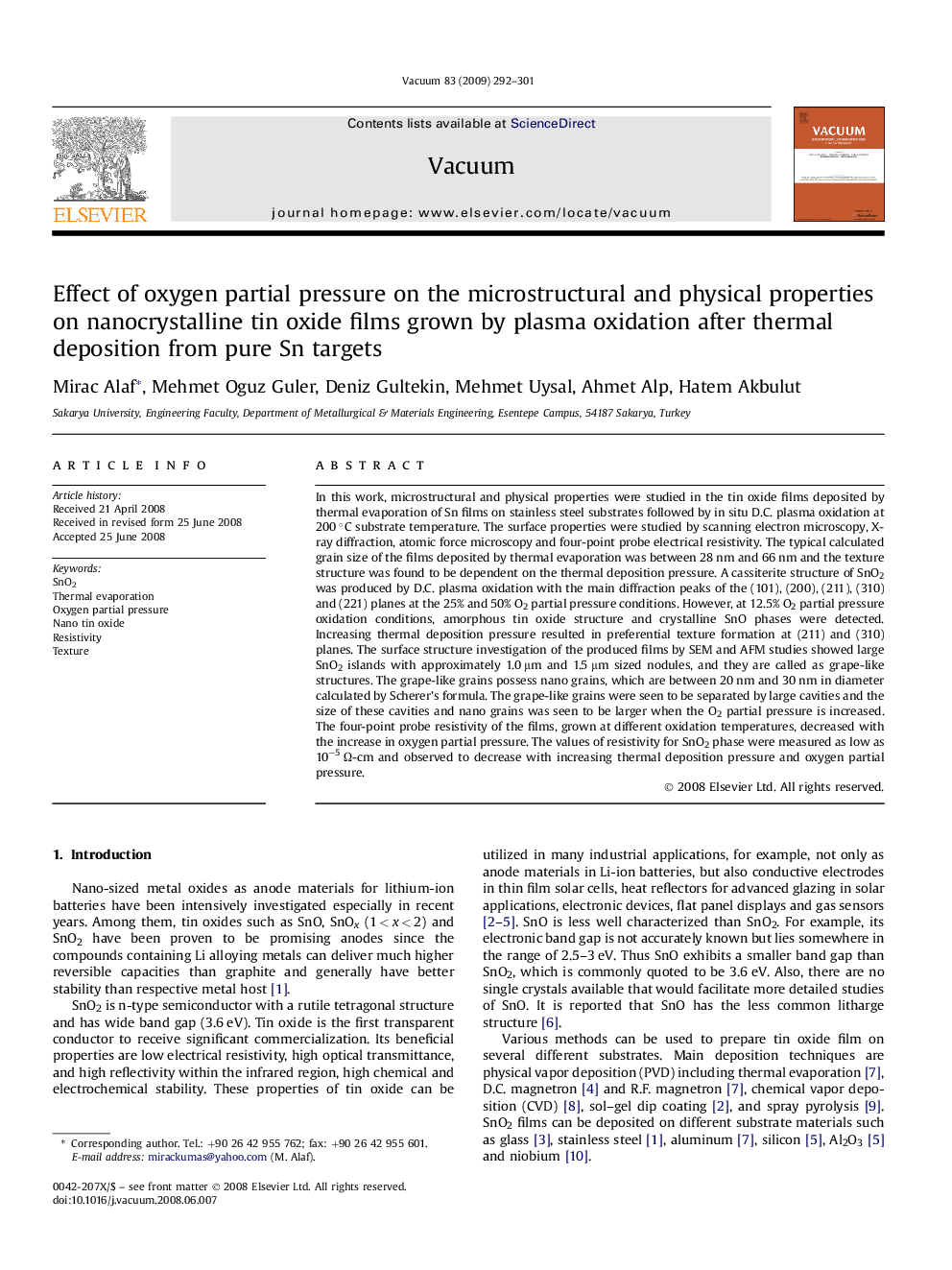| کد مقاله | کد نشریه | سال انتشار | مقاله انگلیسی | نسخه تمام متن |
|---|---|---|---|---|
| 1689240 | 1011223 | 2008 | 10 صفحه PDF | دانلود رایگان |

In this work, microstructural and physical properties were studied in the tin oxide films deposited by thermal evaporation of Sn films on stainless steel substrates followed by in situ D.C. plasma oxidation at 200 °C substrate temperature. The surface properties were studied by scanning electron microscopy, X-ray diffraction, atomic force microscopy and four-point probe electrical resistivity. The typical calculated grain size of the films deposited by thermal evaporation was between 28 nm and 66 nm and the texture structure was found to be dependent on the thermal deposition pressure. A cassiterite structure of SnO2 was produced by D.C. plasma oxidation with the main diffraction peaks of the (101), (200), (211), (310) and (221) planes at the 25% and 50% O2 partial pressure conditions. However, at 12.5% O2 partial pressure oxidation conditions, amorphous tin oxide structure and crystalline SnO phases were detected. Increasing thermal deposition pressure resulted in preferential texture formation at (211) and (310) planes. The surface structure investigation of the produced films by SEM and AFM studies showed large SnO2 islands with approximately 1.0 μm and 1.5 μm sized nodules, and they are called as grape-like structures. The grape-like grains possess nano grains, which are between 20 nm and 30 nm in diameter calculated by Scherer's formula. The grape-like grains were seen to be separated by large cavities and the size of these cavities and nano grains was seen to be larger when the O2 partial pressure is increased. The four-point probe resistivity of the films, grown at different oxidation temperatures, decreased with the increase in oxygen partial pressure. The values of resistivity for SnO2 phase were measured as low as 10−5 Ω-cm and observed to decrease with increasing thermal deposition pressure and oxygen partial pressure.
Journal: Vacuum - Volume 83, Issue 2, 26 September 2008, Pages 292–301